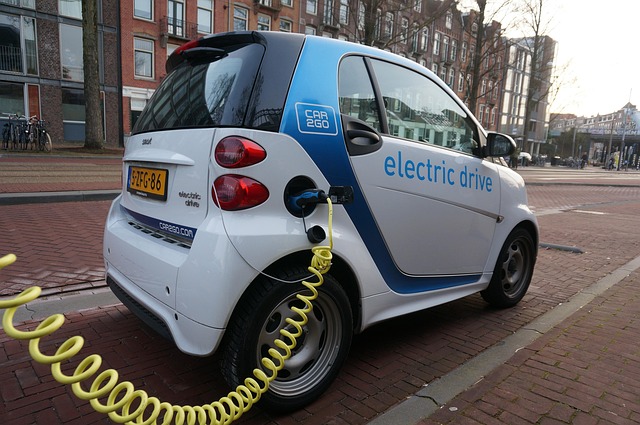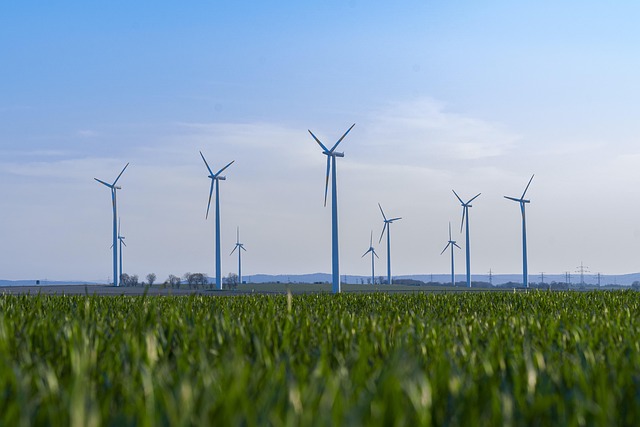Electric motorcycle charging stations, built with eco-friendly materials and powered by renewable energy, are crucial for reducing carbon emissions and promoting sustainable transportation. Select Sustainable Vehicles like electric school buses and green fleet management offer significant advantages. Solar-powered chargers and biodiesel from algae further enhance ecological benefits. Charging stations vary in type and speed, with strategic installation in high-traffic areas encouraging adoption of low-carbon motorcycles and green logistics vans. Government incentives and growing demand drive substantial growth in charging infrastructure, mirroring the expansion of electric car networks.
Electric motorcycles are gaining traction as a sustainable transportation choice, but understanding their charging infrastructure is crucial for widespread adoption. This article explores essential aspects of electric motorcycle charging stations, from their functioning and benefits to different types and installation considerations. We also delve into future trends shaping the evolving landscape of electric motorcycle infrastructure, highlighting the growing importance of select sustainable vehicles in reducing environmental impact.
- Understanding Electric Motorcycle Charging Stations
- Benefits of Sustainable Transportation Choices
- Types and Locations of Charging Stations
- Installation and Maintenance Considerations
- Future Trends in Electric Motorcycle Infrastructure
Understanding Electric Motorcycle Charging Stations

Electric motorcycle charging stations are becoming increasingly vital as the popularity of sustainable vehicles grows. These stations play a crucial role in supporting riders who opt for environmentally friendly transportation options, such as electric motorcycles. By providing convenient and accessible charging solutions, they encourage more people to consider these vehicles, thereby reducing carbon emissions and contributing to a greener future.
When it comes to infrastructure, recycling old cars for metal salvage is not the only sustainable practice that contributes to this ecosystem. Electric vehicle charging stations near me can also be designed with eco-friendly materials, like recycled components in their construction, and powered by renewable energy sources. Even aspects like using biodegradable motor oils for eco-friendly driving contribute to the overall sustainability of the motorcycle’s impact on the environment.
Benefits of Sustainable Transportation Choices

Making the switch to electric motorcycles and implementing green fleet management for businesses offers a multitude of benefits. Firstly, it contributes to sustainable transportation choices, reducing carbon emissions and mitigating climate change impacts. By selecting sustainable vehicles like electric school buses, we can foster safer learning environments while promoting eco-conscious practices. Moreover, integrating solar-powered chargers for electric vehicles further enhances environmental sustainability by harnessing renewable energy sources.
Beyond these advantages, the development of biodiesel production from algae represents a groundbreaking step towards greener fuel options. This innovative approach diversifies sustainable fuel choices and reduces reliance on conventional petroleum, creating a more resilient and environmentally friendly transportation infrastructure.
Types and Locations of Charging Stations

Electric motorcycle charging stations come in various types, each catering to different needs and locations. Fast-charging stations, typically found along highways and in urban centers, offer quick top-ups for long-distance travelers, making them essential for interstate journeys. These stations often utilize advanced technologies like DC fast charging, enabling riders to regain a significant portion of their battery life within minutes.
In contrast, residential and public parking lots are ideal locations for slower, level 2 charging stations. These stations are more accessible and suitable for daily commutes, offering convenience without the speed of fast chargers. With the increasing popularity of electric vehicles (EVs), including select sustainable vehicles, cities worldwide are integrating e-mobility solutions into their infrastructure. This shift towards green car awards and recognition reflects a broader trend in sustainable automotive manufacturing practices, with energy-efficient lighting for garages playing a supporting role in creating eco-friendly environments for charging.
Installation and Maintenance Considerations

The installation of electric motorcycle charging stations involves strategic planning to ensure accessibility and convenience for users. These stations can be strategically placed in various locations such as residential areas, workplaces, shopping centers, or along major transportation routes. When selecting sites, consider factors like high foot traffic, proximity to popular destinations, and easy vehicle access to accommodate a wide range of riders.
Regular maintenance is crucial for the longevity and efficient operation of these charging stations. This includes routine checks on battery connections, power supply systems, and the overall structural integrity of the station. Additionally, keeping records of usage patterns and performing preventative maintenance can help identify potential issues before they become major problems. With proper care, electric motorcycle charging stations can contribute to a greener future by encouraging more people to adopt sustainable delivery vans for green logistics, low-carbon motorcycles for daily riders, and even electric airport shuttles for reduced pollution. Moreover, government incentives like green car rebates and tax breaks can further promote the use of these eco-friendly vehicles.
Future Trends in Electric Motorcycle Infrastructure

The future of electric motorcycle charging infrastructure is poised for significant growth as more riders opt for sustainable transportation options like low-carbon motorcycles for their daily commute. With an increasing focus on reducing urban air pollution, cities worldwide are implementing strict regulations, including low-emission zones in major metropolitan areas. This shift has led to a surge in demand for convenient and accessible charging stations for electric vehicles (EVs), particularly electric cars for eco-conscious commuters.
As the market evolves, we can expect to see more innovative solutions tailored specifically for two-wheeled EVs. The infrastructure development will likely mirror that of electric cars, with a network of public charging stations, fast-charging superhighways, and home-based charging setups becoming the norm. This expansion is not just about accommodating low-carbon motorcycles; it’s also about enhancing the overall EV ecosystem, making sustainable delivery vans for green logistics more viable, and encouraging a broader adoption of eco-friendly modes of transport in daily life.
Electric motorcycle charging stations are transforming sustainable transportation, offering a convenient and accessible network for riders. By embracing these stations and selecting sustainable vehicles, we contribute to cleaner air, reduced traffic congestion, and a greener future. As technology advances and infrastructure expands, the benefits of electric motorcycles will only continue to grow, making them a viable and exciting option for environmentally conscious commuters.



